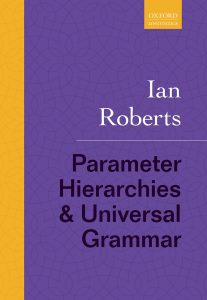
By Ian Roberts
This book develops a minimalist approach to cross-linguistic morphosyntactic variation. The principal claim is that the essential insight of the principles-and-parameters approach to variation can be maintained—albeit in a somewhat different guise—in the context of the minimalist programme for linguistic theory. The central idea is to organize the parameters of Universal Grammar (UG) into hierarchies which define the ways in which properties of individually variant categories and features may act in concert. The hierarchies define macro-, meso-, and microparameters as a function of the position of parametric options in a given hierarchy. A further leading idea, which is consistent with the overall goal of the minimalist programme to reduce the content of UG, is that the parameter hierarchies are not directly determined by UG. They are emergent properties stemming from the interaction of the three factors in language design. Universal Grammar, the first factor, provides a template for the underspecification of the formal features in terms of which parameters are defined. The second and third factors determine the organization of these formal options into hierarchies: two third-factor effects (Feature Economy and Input Generalization) play a central role. Cross-linguistic variation in word order, null subjects, incorporation, verb-movement, case/alignment, wh-movement, and negation are all analysed in the light of this approach. This book represents a significant new contribution to the formal study of cross-linguistic morphosyntactic variation on both the empirical and theoretical levels.
Download
http://usafiles.net/1TUq/Parameter_Hierarchies_and_Universal_Grammar.pdf